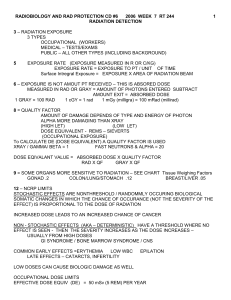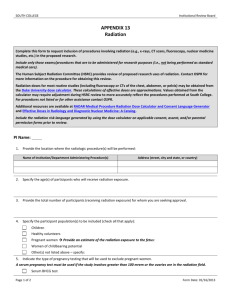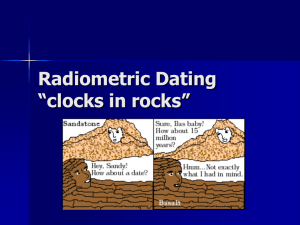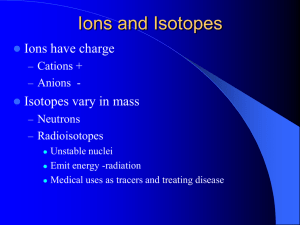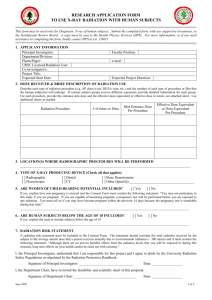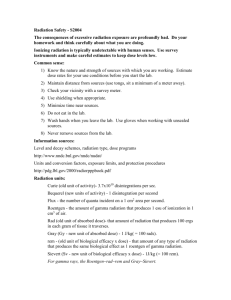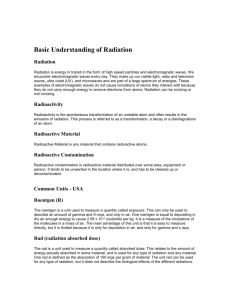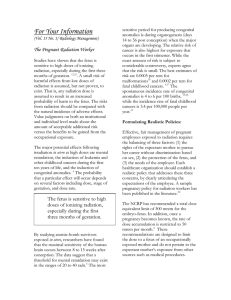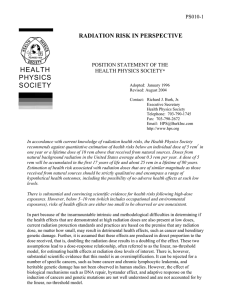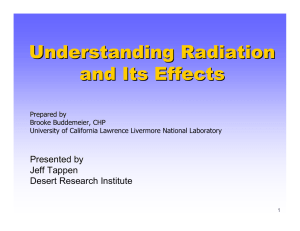First Responders - Does Radiation Change the
advertisement
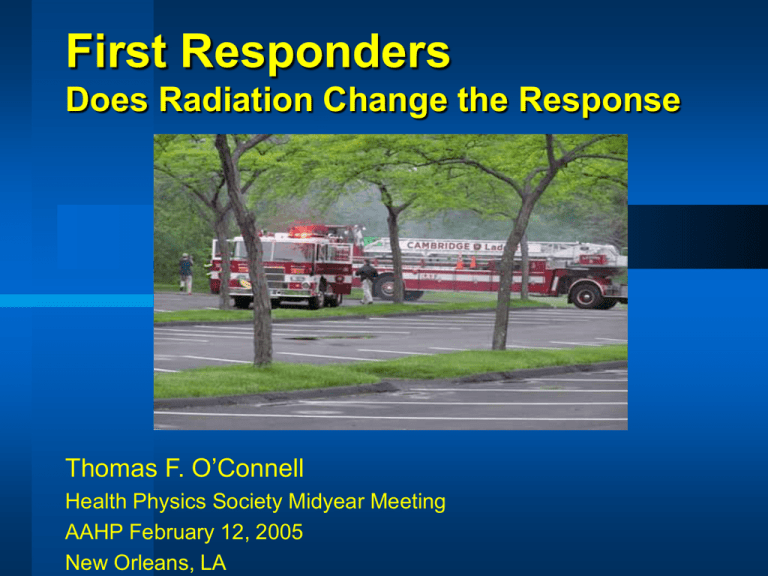
First Responders Does Radiation Change the Response Thomas F. O’Connell Health Physics Society Midyear Meeting AAHP February 12, 2005 New Orleans, LA Possible First Responders Emergency Medical Services Law Enforcement Fire Service Citizens Initial Notification 911 Call Dispatch Station Details – Location – Event – Dependent on Observer Guidelines for Response Weapons of Mass Destruction – Hazardous Materials with Attitude National Fire Protection Association – NFPA 471 Responding to HazMat – NFPA 472 HazMat Competence – NFPA 473 EMS HazMat – Consensus Standards Requirements for Response OSHA – 1910.38, Emergency Action Plans – 1910.120, Hazardous waste operations and emergency response – 1910.120(q), Emergency response program to hazardous substance releases EPA 40 CFR 311 Worker Protection – Brings Everyone Under OSHA Response Structure Incident Specific Multiple Agencies Short Term or Long Term Accountability Control Function Based Sounds Like Incident Command Why Use ICS Time Proven System of Management Standardized Approach Common Terminology Modular and Flexible Cost Effective All Hazards Concept Command Staff Roles and Missions Law Enforcement – Investigation – Security of Scene and Responders Emergency Medical Services – Medical Fire Department – Rescue – Fire Suppression Others Response Ideology Workforce Protection Safe Work in an Unsafe Environment Control Incident Movement Protect Population Preserve Property Sizing Up the Incident Establishing the Scene Impact on Services Personal Protective Equipment Tactics and Strategies Offensive/Defensive Communications Incident Action Plan Every Incident - Verbal or Written Provides Direction for: – Operational Period – Measurable Tactical Operations Minimum of Four Elements – What do We Want to do? – Who is Responsible for Job? – How to Communicate? – Procedures for Injuries? Re-Evaluate Constantly Prioritize Critical Missions Changing Conditions Weather – Now and Projected Unavailable Assets Additional Assets Experts Communications Responder Questions Radiation Limits Dose Rates Exposure When to Work When to Leave Short Term or Long Term Incidents Electronic Dosimeter Alarm Point Guidance Alarm Set Point Type Reading3 1st Dose Rate 2 mrem/hr 2nd Dose Rate 1st Accumulated Dose 10000 mrem/hr (10 Rem/hr) 2500 mrem (2.5 Rem) 2nd Accumulated Dose 10000 mrem (10 Rem) Comments1, 2 This is a generally accepted value to be used to establish the hot zone (exclusion area) for a response to a transportation accident involving radiation. Recommended value listed in National Council on Radiation Protection and Measurements Report Number 138 This is one-half of the 5000 mrem annual regulatory exposure limit for occupationally exposed radiation workers. This is less than one-half the 25000 mrem dose value listed in EPA 400R-92-001 for lifesaving or protection of large populations. Recommended value listed in National Council on Radiation Protection and Measurements Report Number 138. Responder Actions Continue rescue and investigation activities. Establish exclusion zone. Leave the area unless rescue of known victims can be accomplished efficiently and within guidance values for accumulated dose alarms to responders. Accumulated doses greater than 10 Rem must be carefully considered. Seek expert advice. Summary Established Structure Trained Responders Continued Education Perspective is Important Integration and Collaboration Prepare, Respond, Recover
